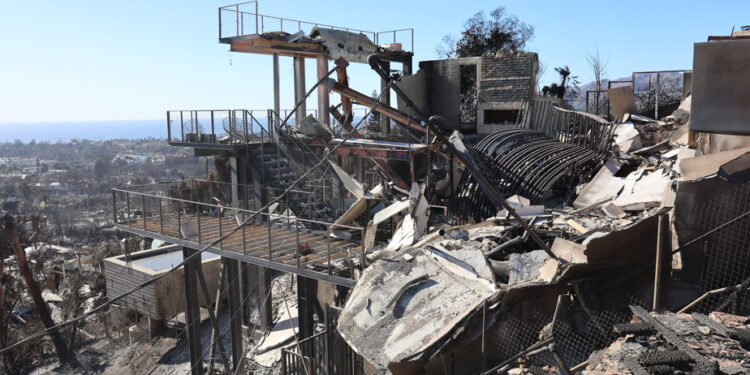(Los Angeles) American authorities announced Wednesday the arrest of a suspect in the investigation into the deadly January fires in Los Angeles, a 29-year-old Uber driver suspected of having caused the flames which ravaged the Pacific Palisades neighborhood.
This man, Jonathan Rinderknecht, allegedly started a fire on New Year’s Eve in the mountains overlooking this wealthy area of the Californian megacity, which is home to many celebrity villas.
It was this initial fire, which firefighters believed to have extinguished, which then reignited on January 7 to devastate the neighborhood and part of the city of Malibu.
U.S. JUSTICE DEPARTMENT PHOTO, PROVIDED BY REUTERS
Jonathan Rinderknecht
The Palisades Fire caused the deaths of 12 people in the area, out of a total of 31 people who died in the Los Angeles fires.
“The recklessness of a single person caused one of the worst fires Los Angeles has ever seen, resulting in death and widespread destruction in Pacific Palisades,” federal prosecutor Bill Essayli said, announcing his arrest.
Arrested in Florida, Mr. Rinderknecht briefly appeared in court in that state on Wednesday, and will be summoned again on Thursday before a judge.
The suspect is a former resident of the Pacific Palisades neighborhood, according to the investigation. On New Year’s Eve, this VTC driver dropped off customers in the area where the fire started.
The geolocation data collected by investigators show that he was “30 feet” – or around 10 meters – from the fire, when he himself tried to call emergency services to report the fire, Mr. Essayli said.
No clear motive
Investigators have not identified a clear motive, but they have gathered evidence they believe is relevant.
The suspect notably generated an image of a city on fire using artificial intelligence in the weeks before the fire. In the preceding days, he also repeatedly listened to a song by French rapper Josman, whose music video shows the artist setting fire to a trash can.
“I wish we could get inside someone’s head, but we can’t,” said Kenny Cooper, an agent with the Bureau of Alcohol, Tobacco, Firearms and Explosives (ATF), acknowledging that the suspect’s motives remain unclear.
Los Angeles Mayor Karen Bass hailed the arrest as an “important step (…) toward comfort for thousands of Californians whose lives have been turned upside down.”
In the process, the city published an audit of the firefighters’ action and assured that it had improved its protocols to prevent such a disaster from happening again.
The slowness of the response and the drying up of certain fire hydrants are still controversial, in a city in the midst of reconstruction, where the pollution generated by the flames still prevents some displaced people from returning home, nine months after the disaster.
Fanned by gusts of up to 160 km/h, the Los Angeles fires are shaping up to be one of the costliest disasters in the United States. Thousands of homes were destroyed in the Californian megacity and tens of thousands of people had to flee their homes.
In addition to the fire that devastated Pacific Palisades, a second fire also ravaged the suburb of Altadena and left 19 dead in this area northeast of the megacity.
The investigation to determine the exact cause of this separate fire is still ongoing, but the preferred lead is that of a faulty power line from the supplier Southern California Edison.
Several videos and testimonies suggest that the equipment generated sparks that would have ignited the flames. In July, the electricity supplier announced that it would begin paying compensation to victims of the fire.



